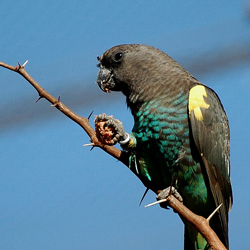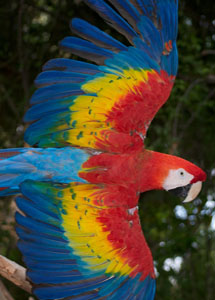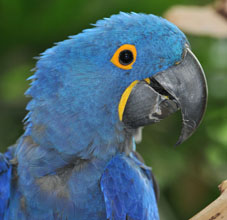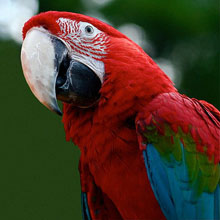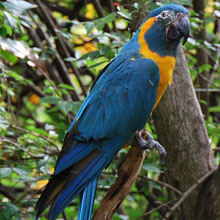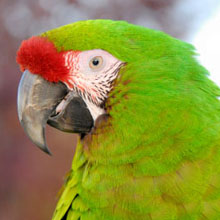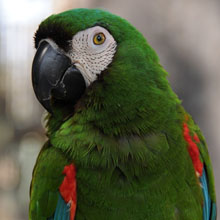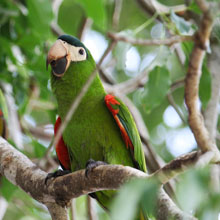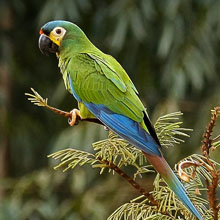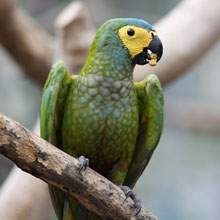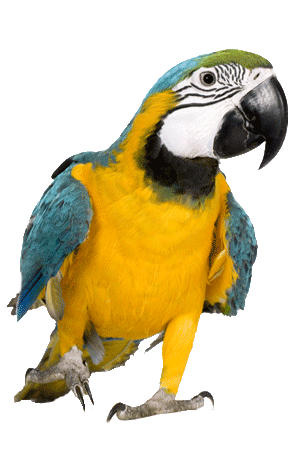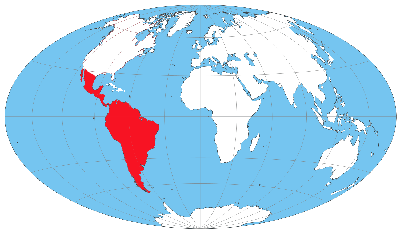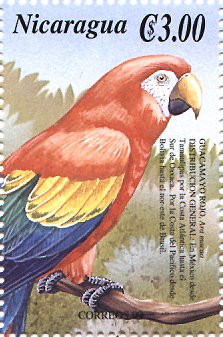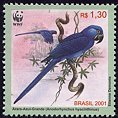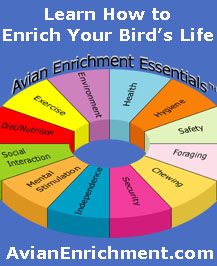Macaws
|
Macaws are exceptionally beautiful and extremely graceful parrots. These birds are not particularly known for their talking abilities, though they can imitate human speech and can be great companion birds. Macaws are renowned for their size, their long tail feathers, their very big vocalizing, and their powerful beaks! The Hyacinth Macaw is the largest flying parrot. Its wings span over 4 feet, and it is over 36" in length! This gorgeous macaw weighs up to three and a half pounds! But not all macaws are large birds. The smallest macaw is the Hahn's Macaw, (Red-shouldered Macaw) and it is a fraction of the size of a Hyacinth. Hahn's Macaws are between 12-14" in length and are referred to sometimes as 'mini-macaws.' There are eighteen species of macaws, though five of those are already extinct. The Spix's Macaw (Little Blue Macaw) is extinct in the wild, and the Glaucous Macaw is considered to be critically endangered or already extinct. One physical characteristic that separates macaws from other parrots is their facial features. Macaws have bare patches of skin on their faces, and these can vary in size depending on the species of macaw. For example, the yellow ring around a Hyacinth Macaw's eyes isn't feathers, it's actually the color of its skin! Each macaw's face is unique, and the feather patterns are similar to human fingerprints: there are no two alike in the world! |
|
|
|
|
|
Macaws are "New World" parrots, meaning they are found only in the Western Hemisphere of the world. Macaws are native to Mexico, Central and South America. They can be found in rainforested areas, as well as in woodlands and on savannahs. Macaws do a incredible job of blending in with their environment. With their brilliant rainbow-colored feathers, they camouflage themselves with the foliage (leaves and branches of plants and trees) and with the fruits and vegetables that they include in their diets. Macaws are very intelligent, social birds. In the wild, macaws can be found in flocks of ten to thirty birds. With a long lifespan (at least 50+ years), they are known to mate for life. When the female macaw lays her eggs (usually two to three), the male's role is to provide food for her as she sits on the clutch until the eggs hatch in approximately 26-28 days. The macaws' diet in the wild consists mainly of fruits, seeds, flowers and stems, nuts, insects and snails! Some macaws are known to also eat the clay from river banks. There are scientists who believe that this helps them to digest some of the foods that they eat! The wild population of macaws is declining primarily due to loss of habitat and illegal trapping for the pet trade. The majority of macaw species are considered to be endangered in the wild.
Watch Hyacinth Macaw babies leave their nest hollow:
|
Listen to Hyacinth Macaw in the wild:
Anodorhynchus hyacinthinus
© 2015 Cornell University
View a video of Scarlet and Green-winged Macaws feeding at a clay lick:
Take a look at this video of a flock of Hyacinth Macaws eating Palm nuts:
|
|
|
|
||||||||||||||||||||||||||||||||||||||||||||||||
|
To see more pictures and obtain information about individual cockatoo species click on the links below:
* Life span, size and weight vary by species. |
(source: bird-stamps.org)
|
Related Articles
 Parrots of the Americas
Parrots of the Americas







































